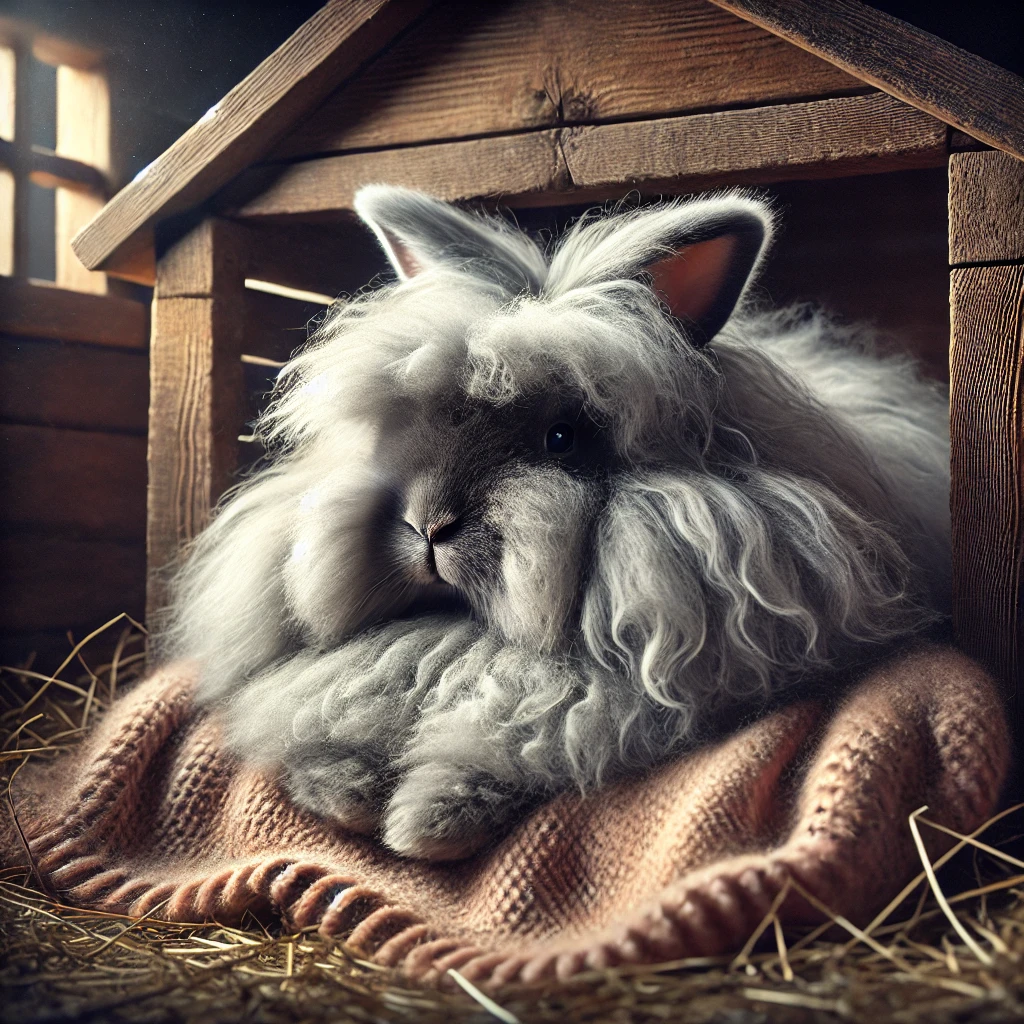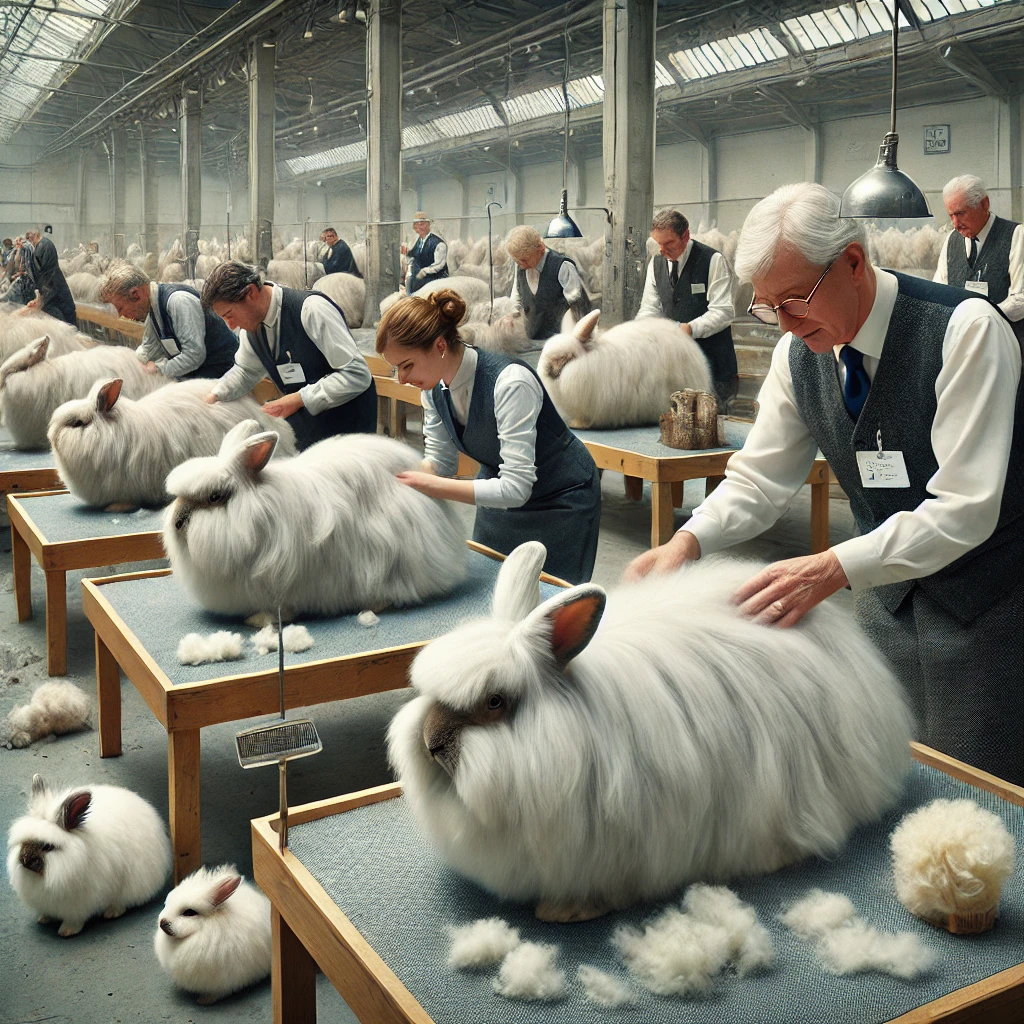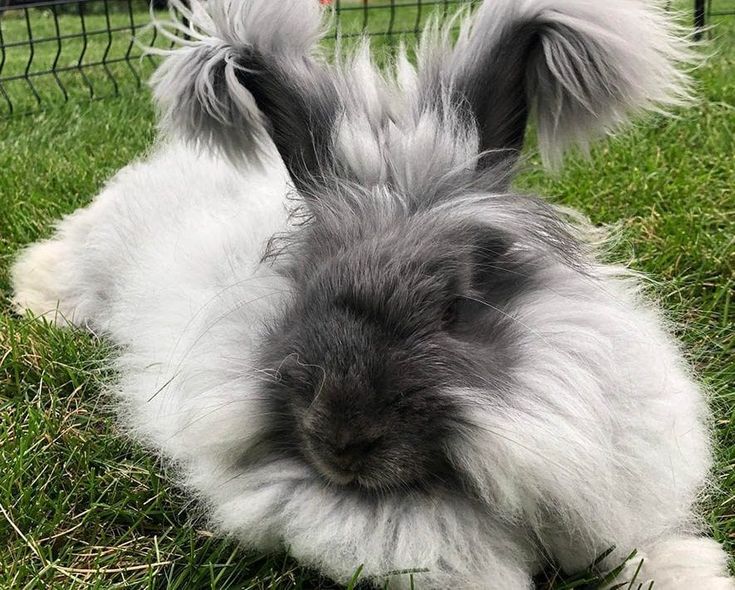The German Angora rabbit is a unique and fluffy breed known for its long, luxurious fur, which produces Angora wool. These rabbits are not only excellent pets but also a sustainable source of wool that can be sheared without causing harm. In this guide, we will cover everything you need to know about German Angora rabbits, from their care to their behavior and uses. This blog is written in simple English so that even children can read and understand it, making it a perfect resource for beginners and experts alike.
Quick Facts About German Angora Rabbits
| Fact | Details |
|---|---|
| Species Name | Lagomorpha |
| Family | Angora-Kaninchen |
| Care Level | Moderate to High |
| Temperature | Moderate |
| Temperament | Docile, friendly, affectionate |
| Color Form | White, Monochromatic, Agouti |
| Lifespan | 7 – 12 years |
| Size | Large |
| Diet | Vegetables, fruits, rabbit pellets |
| Minimum Cage Size | 30″ X 36″ X 24″ |
| Enclosure Setup | Food, water, nest box |
History and Overview of German Angora Rabbits
German Angora rabbits were developed in the 1960s when breeders wanted to create a rabbit that produced more fur than the English Angora. Through selective breeding, the German Angora rabbit was born, capable of producing up to 2,000 grams of wool per year, compared to the 200 grams produced by the English Angora. This extra fur makes the German Angora a popular choice among wool producers and rabbit enthusiasts alike.
Despite their impressive wool production, the American Rabbit Breeders Association (ARBA) does not recognize the German Angora as a separate breed, classifying it with the English Angora instead. However, it is officially recognized by the International Association of German Angora Rabbit Breeders.
How Much Do German Angora Rabbits Cost?
The price of a German Angora rabbit typically ranges between $50 and $120, depending on where you purchase it and the rabbit’s lineage. While pet store rabbits may cost less, purchasing from a reputable breeder usually ensures a healthier pet with a known history, which could lead to fewer medical issues over the rabbit’s lifespan.
Cost Breakdown:
- Pet Store: $50 – $80
- Breeder: $80 – $120
- Ongoing Costs: Food, grooming, vet care
Business Opportunity: Raising German Angora Rabbits for Profit
In addition to being wonderful pets, German Angora rabbits offer a unique business opportunity for those interested in the wool industry. Their thick, luxurious fur is sheared every three months, producing a significant amount of high-quality Angora wool. Each German Angora rabbit can produce up to 2,000 grams (about 4.4 pounds) of wool annually, making them a valuable asset for those looking to sell wool for knitting, felting, or other crafts.
Angora wool is in high demand due to its softness, warmth, and hypoallergenic qualities, often fetching prices of $10 to $16 per ounce. With a single rabbit producing around 4.4 pounds of wool per year, the potential yearly income from one rabbit’s wool alone can be up to $700.
Estimating Potential Profit:
- Average Wool Production per Rabbit: 4.4 pounds per year
- Price of Wool: $10 to $16 per ounce
- Annual Income from One Rabbit: Up to $700
- Additional Profit Sources: Breeding and selling offspring (kits), selling rabbits for shows, and offering grooming services.
If you have a small farm or space to keep several German Angora rabbits, you could scale your business significantly. For example, keeping 10 rabbits could result in an estimated $7,000 in wool sales per year, not including additional revenue from breeding or selling rabbits.
Temperament and Behavior
German Angora rabbits are known for their calm, friendly nature. They enjoy lounging around and can live happily both indoors and outdoors. These rabbits are social creatures that enjoy interacting with their owners, and with proper care and gentle handling, they can become affectionate companions.
Children love their fluffy appearance, and German Angoras are usually patient and docile enough to be held and carried. They can be trained to use a litter box and even come when called, which makes them relatively easy to manage as pets.
Key Personality Traits:
- Temperament: Calm, friendly, affectionate
- Interaction: Enjoys being handled and petted
- Best For Families with time to groom and care for them
Appearance and Varieties
The German Angora is a large rabbit with a thick coat of wool. These rabbits can weigh between 5 to 12 pounds, but they usually fall within the 6 to 7-pound range. They are most commonly white, but you can also find them in various other monochromatic colors like black or brown. Some German Angoras even have patterns like agouti, chinchilla, or tortoiseshell, making them visually diverse.
Appearance Highlights:
- Size: 5–12 pounds (typically 6–7 pounds)
- Color Varieties: White (albino), black, brown, agouti, tortoiseshell
- Coat: Long, thick wool for spinning
How to Care for a German Angora Rabbit
1. Grooming and Shearing
One of the most important aspects of caring for a German Angora rabbit is grooming. Unlike some other breeds, German Angoras do not shed, so you won’t find fur around your house. However, their thick wool needs regular care. You should comb them at least once a week to prevent tangles and mats.
Additionally, German Angoras need to be sheared every three months to prevent their fur from becoming unmanageable. This not only keeps the rabbit comfortable but also prevents health issues like wool block, which occurs when rabbits ingest their fur while grooming.
Grooming Tips:
- Brush Weekly: Prevent tangles and mats.
- Shear Every Three Months: Keep fur under control.
- Check Ears and Nails: Clean ears and trim nails regularly.
2. Cage Setup
German Angoras are larger than the average rabbit, so they need a spacious cage. A minimum size of 30” x 36” x 24” is recommended to give them enough room to move around. If you keep your rabbit outdoors, the cage should be raised to protect them from the elements and predators.
Rabbits also need time outside their cage each day for exercise. Make sure their play area is safe from hazards like electrical wires or toxic plants.
Essential Cage Items:
- Bedding: Soft wood or paper bedding to cushion their feet.
- Water Bottle: A glass or plastic bottle with a drinking tube to keep water clean.
- Food Dish: Easy-to-clean, non-toxic food dish.
3. Feeding Your German Angora Rabbit
German Angoras need a balanced diet that consists of unlimited Timothy hay, vegetables, and high-quality rabbit pellets. Hay is essential for their digestion and helps prevent wool block by keeping their intestines healthy. You can also offer fresh vegetables like carrots, spinach, and kale. Fruits can be given as occasional treats but should be limited due to their high sugar content.
Diet Essentials:
- Timothy Hay: Unlimited access for digestion.
- Vegetables: Fresh greens like spinach and kale.
- Pellets: High-quality commercial rabbit food.
- Fruits: Small amounts as treats.
Keeping Your German Angora Healthy
German Angora rabbits are generally healthy but require regular maintenance to prevent common health issues. The most significant risk is GI Stasis, which can occur if the rabbit ingests too much fur while grooming. Regular shearing and a high-fiber diet help reduce this risk.
Rabbits also love to chew, so it’s important to rabbit-proof your home. Remove or cover any exposed wires and be cautious of objects they may mistake for food.
Common Health Issues:
- GI Stasis: Caused by ingesting fur; prevented by regular shearing and a high-fiber diet.
- Obesity: Avoid overfeeding, especially sugary treats.
- Dental Health: Provide hay to help wear down their continuously growing teeth.
Can German Angora Rabbits Get Along with Other Pets?
German Angora rabbits are generally friendly and can get along with other pets if introduced properly. Early socialization is key, and it’s best to supervise interactions with dogs or cats, as rabbits are naturally prey animals. Make sure your rabbit feels safe and secure in its environment to avoid stress or injury.
Breeding German Angora Rabbits
If you’re interested in breeding German Angoras, it’s important to know that they aren’t recognized as a separate breed by ARBA, which can make finding a breeder difficult. However, they can be bred similarly to other Angora rabbits. The average litter size is around 4–8 kits, and the doe will need a warm, comfortable nest box to give birth.
Breeding Tips:
- Breeding Age: 6–8 months old.
- Litter Size: 4–8 kits.
- Nest Box Size: At least 12″ x 18″ for comfort.
Conclusion: Is a German Angora Rabbit Right for You?
German Angora rabbits are wonderful pets for those willing to put in the effort to care for them. Their calm and friendly nature makes them great companions, and their wool can even be used for spinning. However, they do require regular grooming and shearing to keep their coats in good condition.
FAQs
- How much does a German Angora rabbit cost?
A German Angora rabbit typically costs between $50 and $120, depending on the source and the rabbit’s lineage. - What is the difference between German and Giant Angora rabbits?
German Angoras produce more wool, while Giant Angoras are larger and have more wool on their heads and ears. - What is the lifespan of a German Angora rabbit?
German Angora rabbits generally live for 7 to 12 years with proper care. - Is Angora rabbit expensive?
Yes, Angora rabbits can be expensive due to their wool production, grooming needs, and overall care, with prices ranging from $50 to over $200.





Leave a Reply